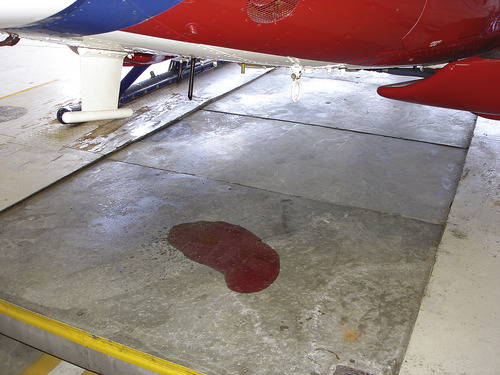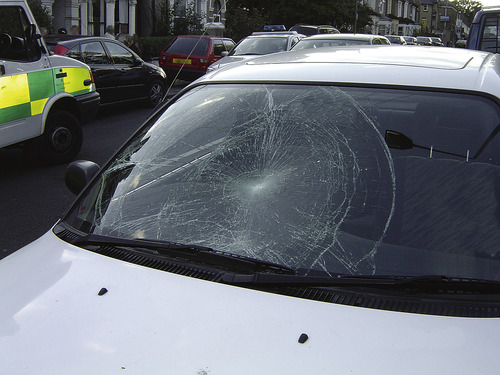CASE 42
42.1 Briefly describe how you will deal with each scenario.
Incident A
The team have just received a primary task to retrieve a 5-year-old child who has fallen from a height. The tasking agency tells you that the child is unconscious with grunting respirations. You are 10 minutes away from the scene by air (rotary-wing aircraft). The pilots are already on board with rotors running but, as you board the aircraft, you notice a puddle of pink fluid under the body of the helicopter (see below)
 |
Incident B
The team have been tasked to a ‘person under a train’ and have arrived on the perimeter of the scene within 10 minutes of the incident. The patient has just gone into cardiac arrest. Despite being asked repeatedly by other emergency personnel to cross the tracks and enter the scene, the team follows protocol and first makes contact with the line controller who confirms that the power is off and all train movements have ceased. Later, after an unsuccessful resuscitation, the Fire & Rescue Service team leader calls you aside and criticises your initial delay in entering the scene. He states that, as he and his men were already on the tracks, it was clear the scene was safe. He suggests that the death may have been preventable with earlier treatment.
Incident C
The PHR team has arrived at scene following an incident in which a 7-year-old boy was hit by a car whilst crossing the road. The child has already been loaded into a land ambulance and packaged ready for transport. There is significant damage to the front of the car and there is a bullseye on the windscreen (see below). The nearest hospital is not a trauma centre and has no neurosurgery on site. The regional trauma centre is 20 minutes away by air. As you approach the rear door of the land ambulance, a crewman opens the door and firmly says that your team is not required, that they are now leaving the scene heading to the nearest hospital and that they can deal with the situation. Behind him you see the child having a tonic-clonic seizure inside the ambulance.
 |
Incident D
The team are tasked by air to a multi-car road traffic accident with reports of three persons seriously injured and trapped. En route, 10 minutes from the scene, the weather closes in and the pilot voices his concerns. An update from the scene confirms the above history and asks for an estimated arrival time but the pilot has already asked you if ‘we can turn back’.
Incident E
The team has been tasked to a civilian helicopter crash that had four persons on board. On arrival, you link up with the Fire & Rescue Service team leader at the perimeter of the scene. The crash occurred 25 minutes ago. There is wreckage strewn around 40 metres (130 feet) in front of you, including an upside down child safety seat. The scene smells strongly of aviation fuel and there is no noise or movement coming from the scene. The Fire & Rescue Service team leader tells you the scene is not safe and he is awaiting a specialist foam tender which will arrive within 10 minutes.
Discussion
Incident A
This scenario concerns lapses in judgement brought about by the nature of the tasking. Initial thoughts may include questioning the significance of the puddle, assuming the pilots know about it or thinking that, because the tasking involves a time-critical patient, there is no time for such a question. Allowing the aircraft to lift before notifying the pilots may generate a false reassurance and perhaps cause further delay in notification. In aeromedical pre-hospital and retrieval operations, each member of the team should recognise their role in team safety. That includes the operational base, aircraft and scene safety. System malfunctions, especially in rotary-wing aircraft, can be catastrophic for all crew and passengers and no medical tasking is worth such a risk. In this instance, the fluid may be hydraulic fluid and a leak of such fluid could lead to a major aviation system failure en route.
< div class='tao-gold-member'>
Only gold members can continue reading. Log In or Register to continue
Stay updated, free articles. Join our Telegram channel

Full access? Get Clinical Tree








